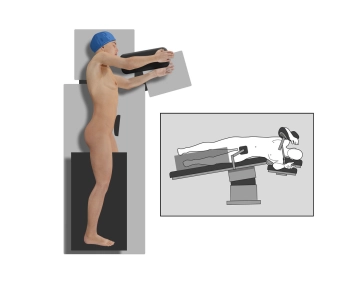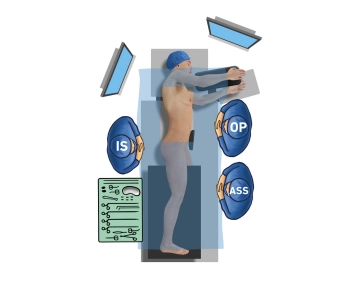Due to the pain caused by the indwelling chest drain, a combination analgesia of a non-opioid analgesic (e.g., Metamizole) in combination with a low-dose opioid (e.g., Tilidine) is advisable. Follow the link to PROSPECT (Procedures Specific Postoperative Pain Management) and to the current guideline Management of Acute Perioperative and Posttraumatic Pain.
- Medical Follow-up
- X-ray control on the operating table
- Chest drain with suction 20mmHg for approximately 2 days postoperatively, removal after X-ray control if secretion volume is under 250ml/24h and without evidence of an air fistula
- Bronchoscopic anastomosis control on the 1st and 6th postoperative day.
- Thrombosis Prophylaxis
Standard thrombosis prophylaxis for 14 days with low molecular weight heparin subcutaneously, considering comorbidities, renal function, and laboratory control to exclude HIT. Link to the current guideline: Prophylaxis of Venous Thromboembolism (VTE)
Full mobilization possible from the 1st postoperative day
Mobilization, breathing exercises, and secretion mobilization
Regular diet
Accompanying opioid analgesia
Approximately 14 days, considering the type of work and patient situation


